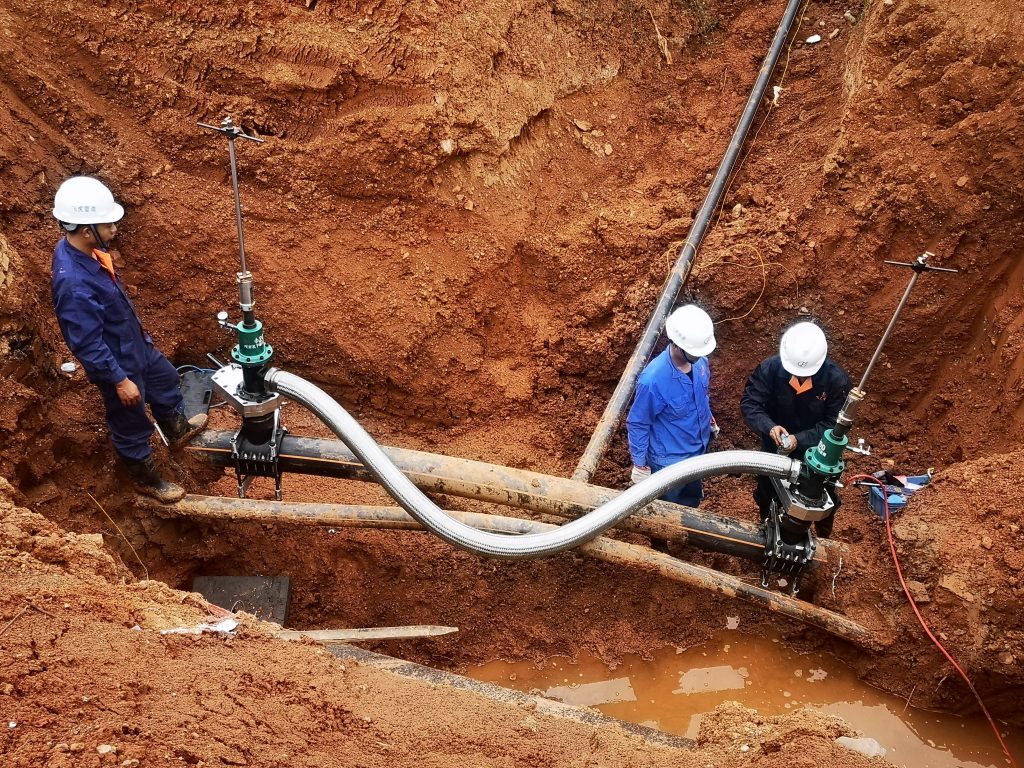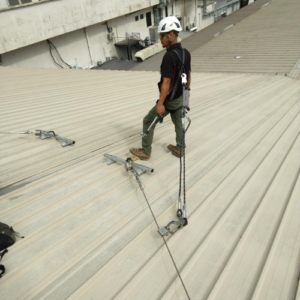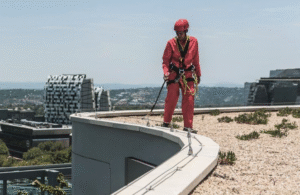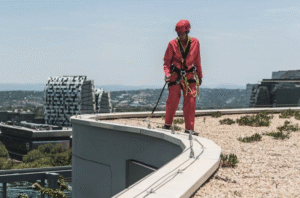Understanding PE Line Stopping
PE line stopping refers to a specialized method used to temporarily halt the flow within a polyethylene (PE) pipeline without requiring a complete shutdown of the entire system. This process is particularly valuable because PE pipelines are commonly used in modern infrastructure, including water, gas, and industrial systems. The material’s durability, flexibility, and cost-effectiveness make PE pipes a preferred choice, but like any infrastructure, they require regular maintenance and occasional interventions.
In situations where repairs, modifications, or emergency responses are needed, PE line stopping provides a controlled and safe way to isolate sections of the pipeline. This minimizes disruption and ensures that services continue in unaffected areas. Unlike traditional shutdowns, which may cause major service interruptions and inconvenience to customers or businesses, PE line stopping allows work to proceed with minimal impact. It serves as a critical tool in industries where continuous service is essential, offering reliability and efficiency in handling pipeline operations.
The Role of PE Line Stopping in Pipeline Systems
The ability to maintain service flow while isolating specific pipeline sections is one of the most important benefits of PE line stopping. Municipal water suppliers, gas distributors, and industrial operators all depend on uninterrupted service, which makes this process a cornerstone of modern pipeline management. By avoiding complete shutdowns, companies can prevent costly downtime and reduce customer complaints.
Beyond operational continuity, PE line stopping plays a vital role in enhancing safety. Workers are able to perform maintenance or emergency repairs in a controlled environment, reducing the risks associated with uncontrolled leaks or system pressure. Communities benefit from uninterrupted service delivery, while businesses avoid disruptions that could affect production schedules or service commitments. In effect, PE line stopping not only maintains pipelines but also safeguards public trust in the systems they rely on daily.
How PE Line Stopping Works
The process of PE line stopping involves a precise sequence of steps that ensure safety and efficiency. First, a specialized fitting is installed onto the PE pipe at the location where flow control is required. Once the fitting is secured, a valve is attached, and specialized equipment inserts a stopping head into the pipeline. This creates a seal, halting the flow in that section while allowing the rest of the system to remain operational.
The tools used in PE line stopping are designed for reliability and durability. They include line stop machines, tapping tools, and sealing heads specifically engineered for polyethylene pipes. This approach differs from other pipeline intervention methods, such as full shutdowns or costly diversions, because it offers a temporary yet effective solution. Each step of the process is carried out with precision, ensuring that flow is managed safely while technicians perform necessary work downstream.
Applications of PE Line Stopping in Different Industries
PE line stopping has diverse applications across several sectors. Municipalities use it to perform maintenance on water distribution systems without cutting off supply to entire neighborhoods. Gas distribution networks rely on the process to prevent leaks or allow upgrades while still delivering energy to consumers. Industrial facilities, particularly those operating around the clock, benefit greatly from the ability to isolate sections of piping for repairs without halting production lines.
The technique is also vital in emergency repairs, where quick intervention can prevent hazards and service loss. Planned maintenance projects, such as pipeline extensions or valve replacements, also leverage PE line stopping to maintain system performance. Across these industries, the process proves its value by enabling continuity, safety, and efficiency—qualities that are essential in today’s infrastructure-dependent world.
Advantages of PE Line Stopping
PE line stopping offers multiple advantages that make it the preferred choice for many operators. Some of the most significant benefits include:
- Cost savings by avoiding the expenses of full shutdowns or extensive bypass systems
- Operational continuity that allows unaffected sections of the pipeline to function normally
- Flexibility to reroute flow or create temporary bypasses during repairs
- Safety for both workers and the public through controlled interventions
- Environmental benefits by reducing waste and avoiding uncontrolled discharges
These advantages highlight why many organizations incorporate PE line stopping into their standard maintenance and emergency response strategies. The ability to save both time and resources while maintaining safety and service reliability makes this method indispensable in modern pipeline management.
Challenges and Considerations in PE Line Stopping
While PE line stopping is highly effective, there are considerations that must be taken into account. Factors such as pipe size, wall thickness, pressure levels, and material grade can all impact the effectiveness of the process. Operators must carefully evaluate these elements to determine the most appropriate approach.
Additionally, limitations exist when compared to other techniques. For example, some pipelines with extreme pressure conditions may require alternative intervention methods. Ensuring that certified technicians carry out the procedure with the right equipment is essential for safety and effectiveness. By understanding these challenges, organizations can better plan for pipeline interventions that deliver reliable results without compromising safety.
Innovations in PE Line Stopping Technology
The field of PE line stopping continues to evolve as new innovations are introduced. Advances in sealing technology now allow for even more secure and reliable interventions. Modern equipment offers greater precision, reducing the likelihood of leaks or system failures.
Digital monitoring systems also play an increasingly important role in enhancing the process. With sensors and real-time data tracking, operators can gain insights into pipeline conditions before, during, and after a line stop. This improves decision-making and helps ensure compliance with safety and performance standards. As technology progresses, PE line stopping becomes more efficient, reliable, and adaptable to a wider range of pipeline scenarios.
Choosing a PE Line Stopping Service Provider
Selecting the right service provider is critical for successful PE line stopping projects. Operators should look for contractors with proven expertise, industry certifications, and specialized equipment tailored for polyethylene pipelines. A strong track record of safe and efficient operations is a good indicator of quality service.
Before engaging a provider, it is wise to ask key questions, such as:
- What certifications and training do your technicians hold?
- What equipment and techniques do you use specifically for PE pipelines?
- How do you ensure compliance with safety and regulatory standards?
- What experience do you have with projects similar to ours?
By carefully evaluating providers, organizations can ensure that they are entrusting their pipeline systems to qualified professionals capable of delivering effective results.
Safety and Regulatory Standards
PE line stopping must adhere to strict safety and regulatory standards. These standards are in place to protect workers, the public, and the environment. Common regulations include guidelines for pressure control, material compatibility, and emergency procedures. Operators who comply with these rules not only ensure safety but also reduce liability and avoid costly penalties.
Industry regulations may vary depending on the type of pipeline system—water, gas, or industrial—but the emphasis on safety remains constant. Adhering to best practices and using certified technicians is crucial for maintaining compliance. Ultimately, safety and regulation are the cornerstones of successful PE line stopping operations.
Cost Factors in PE Line Stopping Projects
The cost of PE line stopping varies depending on several elements. Pipe diameter, system pressure, and project location all play significant roles in determining price. Urgency can also affect costs, as emergency interventions may require immediate mobilization and additional resources.
When compared to full pipeline shutdowns, PE line stopping often delivers substantial savings. The ability to keep systems operational reduces indirect costs, such as lost revenue, downtime, or customer compensation. Over time, organizations that invest in effective line stopping strategies see long-term financial benefits, as they extend the life of their pipelines and minimize major repair expenses.
Maintenance Tips for PE Pipelines
Proper maintenance is essential for extending the lifespan of PE pipelines. Regular inspections help identify potential weaknesses before they escalate into serious issues. Operators should also monitor pressure levels, joint integrity, and signs of wear that could compromise performance.
PE line stopping can be part of a broader preventative maintenance strategy. By incorporating this technique, operators can address issues early without disrupting service. Routine maintenance ensures that pipelines remain reliable, safe, and efficient, ultimately reducing the risk of costly emergency repairs.
Frequently Asked Questions (FAQ)
What is the maximum pressure PE line stopping can handle?
The maximum pressure depends on the equipment used and the pipeline specifications. Many modern systems are designed to handle a wide range of pressures safely.
How long does the PE line stopping process usually take?
The process duration varies, but most projects can be completed within a few hours to a day, depending on complexity and conditions.
Is PE line stopping safe for drinking water pipelines?
Yes, when performed with the proper equipment and techniques, PE line stopping is safe for potable water systems and meets health standards.
Can PE line stopping be applied on all pipe diameters?
It is effective across a wide range of pipe sizes, although very large or unique systems may require specialized equipment.
How often should PE pipelines undergo inspection and maintenance?
Routine inspections are recommended annually, with more frequent checks in high-pressure or high-demand systems.
Takeaway
PE line stopping is an essential technique for maintaining and repairing polyethylene pipelines without disrupting service. By offering cost savings, safety, and operational continuity, it provides unmatched value across industries such as water, gas, and industrial systems. While challenges exist, innovations in technology and adherence to safety standards ensure reliable results. For municipalities, industrial operators, and contractors, investing in PE line stopping is a proactive step toward efficient and dependable pipeline management.







